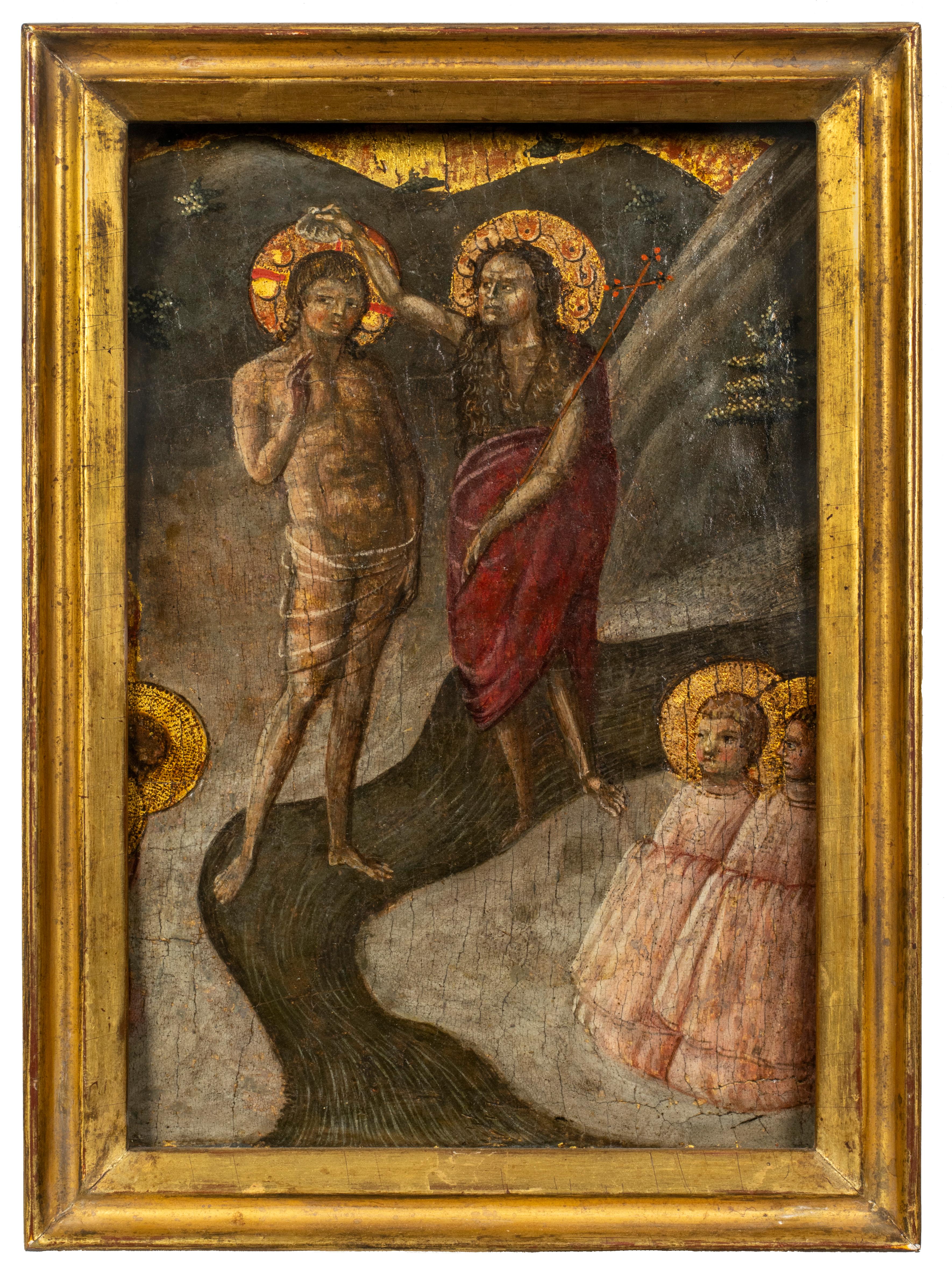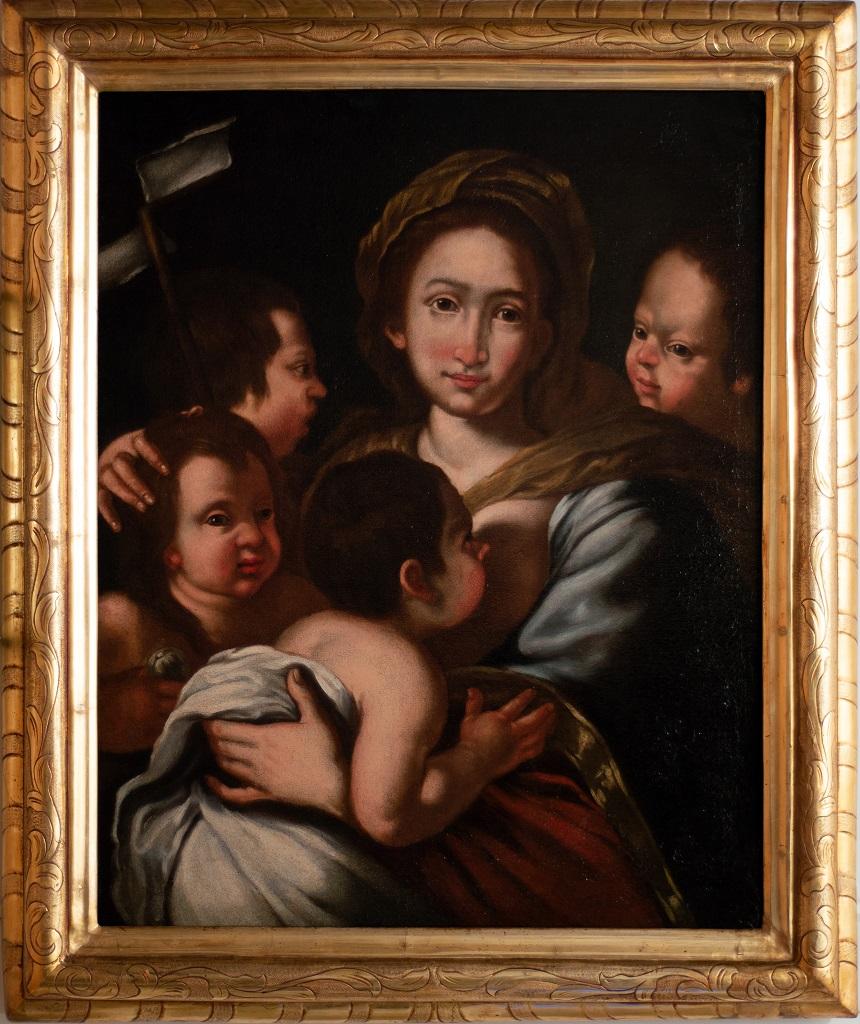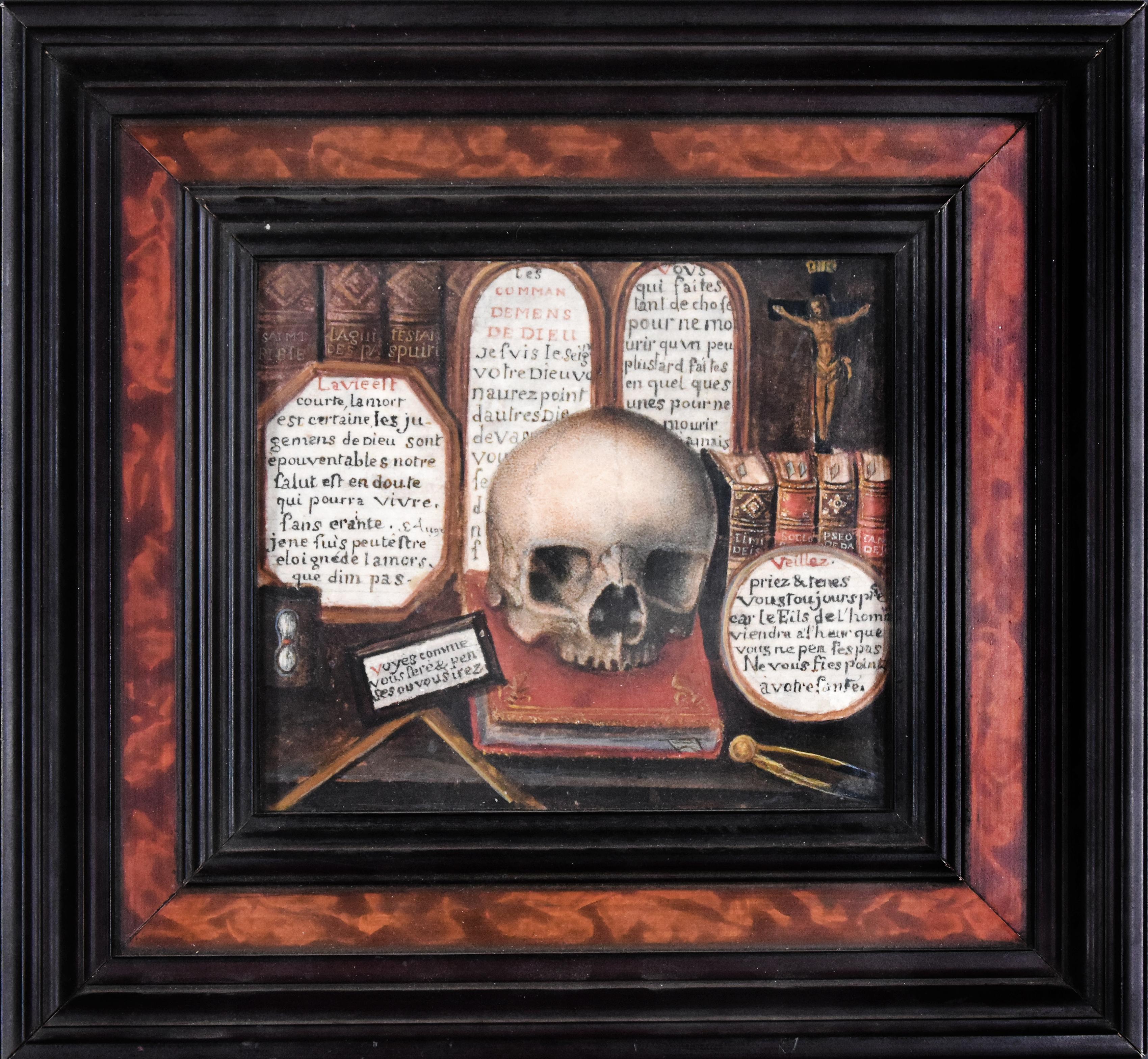Items Similar to The Resurrection of Christ
Want more images or videos?
Request additional images or videos from the seller
Bohemian School, ca. 1380-1400The Resurrection of ChristCirca 1385
Circa 1385
About the Item
Provenance:
with “Mr. Scheer,” Vienna, by July 1918; where acquired by:
Jindřich Waldes, Prague, 1918–1941; thence by descent to:
Private Collection, New York
Literature:
Rudolf Kuchynka, “České obrazy tabulové ve Waldesově obrazárně,” Památky archeologické, vol. 31 (1919), pp. 62-64, fig. 5.
Jaroslav Pešina, “K datování deskových obrazů ve Waldesově obrazárně,” Ročenka Kruhu pro Pěstování Dějin Umění: za rok (1934), pp. 131-137.
Jaroslav Pešina, Pozdně gotické deskové malířství v Čechách, Prague, 1940, pp. 150-151, 220.
Patrik Šimon, Jindřich Waldes: sběratel umění, Prague, 2001, pp. 166, 168, footnote 190.
Ivo Hlobil, “Tři gotické obrazy ze sbírky Jindřicha Waldese,” Umění, vol. 52, no. 4 (2004), p. 369.
Executed sometime in the 1380s or 1390s by a close associate of the Master of the
Třeboň Altarpiece, this impressive panel is a rare work created at the royal court in Prague and a significant re-discovery for the corpus of early Bohemian painting. It has emerged from an American collection, descendants of the celebrated Czech industrialist and collector Jindřich Waldes, who died in Havana fleeing Nazi-occupied Europe.
The distinctive visual tradition of the Bohemian school first began to take shape in the middle of the fourteenth century after Charles IV—King of Bohemia and later Holy Roman Emperor—established Prague as a major artistic center. The influx of foreign artists and the importation of significant works of art from across Europe had a profound influence on the development of a local pictorial style. Early Italian paintings, especially those by Sienese painters and Tommaso da Modena (who worked at Charles IV’s court), had a considerable impact on the first generation of Bohemian painters. Although this influence is still felt in the brilliant gold ground and the delicate tooling of the present work, the author of this painting appears to be responding more to the paintings of his predecessors in Prague than to foreign influences.
This Resurrection of Christ employs a compositional format that was popular throughout the late medieval period but was particularly pervasive in Bohemian painting. Christ is shown sitting atop a pink marble sarcophagus, stepping down onto the ground with one bare foot. He blesses the viewer with his right hand, while in his left he holds a triumphal cross with a fluttering banner, symbolizing his victory over death. Several Roman soldiers doze at the base of the tomb, except for one grotesque figure, who, beginning to wake, shields his eyes from the light and looks on with a face of bewilderment as Christ emerges from his tomb. Christ is wrapped in a striking red robe with a blue interior lining, the colors of which vary subtly in the changing light. He stands out prominently against the gold backdrop, which is interrupted only by the abstractly rendered landscape and trees on either side of him.
The soldiers’ armor is rendered in exacting detail, the cool gray of the metal contrasting with the earth tones of the outer garments. The sleeping soldier set within a jumble of armor with neither face nor hands exposed, is covered with what appears to be a shield emblazoned with two flies on a white field, somewhat resembling a cartouche (Fig. 1). This may be a heraldic device of the altarpiece’s patron or it may signify evil, referencing either the Roman soldiers or death, over both of which Christ triumphs.
This painting formed part of the collection assembled by the Czech industrialist and founder of the Waldes Koh-i-noor Company, Jindřich Waldes, in the early twentieth century. As a collector he is best remembered for establishing the Waldes Museum in Prague to house his collection of buttons (totaling nearly 70,000 items), as well as for being the primary patron of the modernist painter František Kupka. Waldes was also an avid collector of older art, and he approached his collecting activity with the goal of creating an encyclopedic collection of Czech art from the medieval period through to the then-present day. At the conclusion of two decades of collecting, his inventory counted 2331 paintings and drawings, 4764 prints, and 162 sculptures. This collection, which constituted the Waldesova Obrazárna (Waldes Picture Gallery), was first displayed in Waldes’ home in Prague at 44 Americká Street and later at his newly built Villa Marie at 12 Koperníkova Street. This Resurrection of Christ retains its frame from the Waldes Picture Gallery, including its original plaque “173 / Česky malíř z konce 14 stol.” (“Czech painter from the end of the 14th century”) and Waldes’ collection label on the reverse.
The Resurrection of Christ was one of the most significant late medieval panel paintings in the Waldes Picture Gallery. It was part of a series of four paintings including a Flagellation of Christ, Christ on the Mount of Olives, and The Pentecost—constituting a Passion Cycle—that Waldes acquired in July 1918 (Figs. 2-5). This was an important moment in Waldes’ activity as a collector of early Czech painting. His purchase of this Passion Cycle came on the heels of his headline-making acquisition of an early Bohemian diptych at the sale of Richard von Kaufmann’s collection in Berlin in December 1917, the first medieval painting that he added to his collection. However, while the Waldes diptych has been well-documented and frequently commented on by scholars, the present painting and the other related panels have been absent from the literature on early Bohemian art and have remained unseen by scholars for almost a century.
The earliest notice of the Resurrection and the series to which it belongs was published in 1919 by Rudolf Kuchynka, the curator and administrator of the Waldes Picture Gallery. According to Kuchynka, the four paintings were originally two wings of an altarpiece (painted on the front and reverse) that were cut down and cradled, creating four distinct works. Although nothing further is known about the original complex, it is likely that these wings flanked a central image of the Crucifixion. Kuchynka compared these paintings to those of the Master of Vyšší Brod and the Master of the Třeboň Altarpiece, suggesting a date for these panels of around 1400.
A later date was suggested by Jaroslav Pešina who proposed that the Waldes panels were examples of “conscious archaism,” but his proposal has since been widely discounted. The dating of the series was more recently discussed by Ivo Hlobil in 2004. Focusing specifically on the Christ on the Mount of Olives and the Pentecost, Hlobil posits that those two paintings, but not the others, are by later hands, proposing a date for these in the 1440s. It may well be that the inner panels—the Flagellation and our Resurrection—and the outer panels—Christ on the Mount of Olives and the Pentecost—of the altarpiece were painted as much as fifty years apart. This accords well with Dr. Alexandra Suda’s recent dating of our Resurrection to the 1380s or 1390s (verbal communication 28 August 2019). The author of our Resurrection is not at present identifiable with any of the known artistic personalities of early Bohemian panel painting. Suda has suggested that on stylistic grounds he must be close to the Master of the Třeboň Altarpiece and it is possible that our artist trained in that master’s evidently large workshop.
The fact that the Waldes Resurrection of Christ has been absent from the scholarly literature is largely explained by its transferal to the United States at the outbreak of the Second World War. In the 1930s Jindřich Waldes sent his family to the United States—the Koh-i-noor Company had several factories and an extensive operation there—while he remained behind in Prague as a proud Czech patriot. He was arrested by the Gestapo in September 1939 and imprisoned in Dachau and Buchenwald because of his Jewish heritage. Waldes was released from the concentration camp in 1941 after his wife paid a ransom of 8 million Czech korunas to the Gestapo, but he died during his voyage from Europe to the United States. He had sent a portion of his art collection (including the present painting) to United States along with his family, while the balance remained in Prague only to be confiscated by the Nazi’s in 1941, deposited in the National Gallery of Prague, and eventually incorporated into the museum’s collections. Some of these works were restituted to the family in 1996.
- Creator:Bohemian School, ca. 1380-1400 (Bohemian)
- Creation Year:Circa 1385
- Dimensions:Height: 33 in (83.82 cm)Width: 22 in (55.88 cm)
- Medium:
- Movement & Style:
- Period:
- Condition:
- Gallery Location:New York, NY
- Reference Number:1stDibs: LU10212222692

About the Seller
5.0
Recognized Seller
These prestigious sellers are industry leaders and represent the highest echelon for item quality and design.
Established in 1997
1stDibs seller since 2012
17 sales on 1stDibs
Typical response time: 11 hours
- ShippingRetrieving quote...Ships From: New York, NY
- Return PolicyThis item cannot be returned.
More From This SellerView All
- Baptism of ChristLocated in New York, NYProvenance: Achillito Chiesa, Milan Luigi Albrighi, Florence, by 1 July 1955 with Marcello and Carlo Sestieri, Rome, 1969 Private Collection, Connecticut Exhibited: Mount Holyoke College Art Museum, South Hadley, Massachusetts (on loan, 2012) Literature: Carlo Volpe, “Alcune restituzioni al Maestro dei Santi Quirico e Giulitta,” in Quaderni di Emblema 2: Miscellanea di Bonsanti, Fahy, Francisci, Gardner, Mortari, Sestieri, Volpe, Zeri, Bergamo, 1973, pp. 19-20, fig. 18, as by the Master of Saints Quiricus and Julitta (now identified as Borghese di Piero). This fine predella panel depicting the Baptism...Category
15th Century and Earlier Old Masters Figurative Paintings
MaterialsWood Panel, Tempera
- Esther in the Women's House of AhasuerusBy Artus WolfortLocated in New York, NYBorn in Antwerp, Artus Wolffordt received his training in Dordrecht where he became a master in 1603 at the age of twenty-two. He returned to his native city in 1615 and initially worked as an assistant to Otto van Veen...Category
17th Century Old Masters Paintings
MaterialsPanel, Oil
- Portrait of a ManLocated in New York, NYProvenance: with Leo Blumenreich and Julius Böhler, Munich, 1924 Dr. Frederic Goldstein Oppenheimer (1881-1963), San Antonio, Texas; by whom given to: Abraham M. Adler, New York, un...Category
16th Century Old Masters Portrait Paintings
MaterialsOil, Panel
- Madonna and Child with the Infant Saint John the BaptistLocated in New York, NYInscribed, reverse: Fr Brina Provenance: Private Collection, New Jersey. Francesco Brina was one of the “Studiolo” painters, responsible for the panel of Neptune and Amphitrite in F...Category
16th Century Old Masters Paintings
MaterialsOil, Wood Panel
- Job Cursed by His WifeBy Giovanni Battista LangettiLocated in New York, NYProvenance: Alfred (1883-1961) and Hermine Stiassni (1889-1962), Brno, Czech Republic, by 1925; thence London, 1938-1940; thence Los Angeles, 1940-1962; thence by descent to: Susanne Stiassni Martin and Leonard Martin, San Francisco, until 2005; thence by descent to: Private Collection, California Exhibited: Künstlerhaus, Brünn (Brno), 1925, as by Ribera. “Art of Collecting,” Flint Institute of Art, Flint, Michigan, 23 November 2018 – 6 January 2019. Literature: Alte Meister...Category
1670s Old Masters Paintings
MaterialsCanvas, Oil
- Head of an AngelLocated in New York, NYProcaccini was born in Bologna, but his family moved to Milan when the artist was eleven years old. His artistic education was evidently familial— from his father Ercole and his elder brothers Camillo and Carlo Antonio, all painters—but his career began as a sculptor, and at an early age: his first known commission, a sculpted saint for the Duomo of Milan, came when he was only seventeen years old. Procaccini’s earliest documented painting, the Pietà for the Church of Santa Maria presso San Celso in Milan, was completed by 1604. By this time the artist had made the trip to Parma recorded by his biographers, where he studied Correggio, Mazzola Bedoli, and especially Parmigianino; reflections of their work are apparent throughout Procaccini's career. As Dr. Hugh Brigstocke has recently indicated, the present oil sketch is preparatory for the figure of the angel seen between the heads of the Virgin and St. Charles Borrommeo in Procaccini's altarpiece in the Church of Santa Afra in Brescia (ill. in Il Seicento Lombardo; Catalogo dei dipinti e delle sculture, exh. cat. Milan 1973, no. 98, pl. 113). As such it is the only known oil sketch of Procaccini's that can be directly connected with an extant altarpiece. The finished canvas, The Virgin and Child with Saints Charles Borrommeo and Latino with Angels, remains in the church for which it was painted; it is one of the most significant works of Procaccini's maturity and is generally dated after the artist's trip to Genoa in 1618. The Head of an Angel is an immediate study, no doubt taken from life, but one stylistically suffused with strong echoes of Correggio and Leonardo. Luigi Lanzi, writing of the completed altarpiece in 1796, specifically commented on Procaccini's indebtedness to Correggio (as well as the expressions of the angels) here: “Di Giulio Cesare...Category
17th Century Old Masters Figurative Paintings
MaterialsPaper, Canvas, Oil
You May Also Like
- Russian Icon 16th century The Battle of the Novogorodians with the SuzdaliansBy Russian SchoolLocated in London, GBThe Battle of the Novogorodians with the Suzdalians 16th century Size 50.5 x 47.5 x 3 cm. The icon is located in the Russian Federation. There is an expert opinion from leading R...Category
16th Century Old Masters Paintings
MaterialsWood, Egg Tempera, Wood Panel
- Circa 1400, Spanish school of 'The Prophet Daniel', tempera on panel with gildinLocated in Petworth, West SussexSpanish school, circa 1400 The prophet Daniel Tempera on panel with gilding 35.1/4 x 10.5/8 in. (89.5 x 28 cm.) Condition: The painting has been recently stabilised and cleaned up. ...Category
15th Century and Earlier Old Masters Figurative Paintings
MaterialsWood Panel, Tempera
- Christian Charity - Tempera by the circle of Bernardo Strozzi - 1630sBy Bernardo StrozziLocated in Roma, ITChristian Charity is an original Old Master Painting realized in the first half of the XVII Century, most probably in the 1630s, by one of the pupils of the Italian artist Bernardo Strozzi...Category
1630s Old Masters Figurative Paintings
MaterialsTempera, Canvas
- Carlo Grubacs(Venetian master)- Pair of 19th century Venice landscape paintingsBy Carlo GrubacsLocated in Varmo, ITCarlo Grubacs (Perasto 1801 - Venice 1870) - Venice, pair of views of Piazza S. Marco and the Basin towards the Riva degli Schiavoni. 11 x 16 cm without frame, 29.5 x 34.5 cm with f...Category
Mid-19th Century Old Masters Landscape Paintings
MaterialsTempera, Paper
- Skull with Sacred Writings and Tablets of the Law - Tempera on CardboardLocated in Roma, ITSkull with Sacred Writings and Tablets of the Law is a superb and colorful tempera on cardboard, realized in 1766 by an anonymous artist of ...Category
18th Century Old Masters Figurative Paintings
MaterialsTempera
- Carlo Grubacs(Venetian master)- Pair of 19th century Venice landscape paintingsBy Carlo GrubacsLocated in Varmo, ITCarlo Grubacs (Perasto 1801 - Venice 1870) - Venice, pair of views of Piazza S. Marco and the Piazzetta towards the Clock Tower. 19 x 24 cm without frame, 25 x 30 cm with frame. An...Category
Mid-19th Century Old Masters Landscape Paintings
MaterialsTempera, Paper
Recently Viewed
View AllMore Ways To Browse
Two Tone Heels
Gold And Pink Heels
Antique Tools New York
Antique Picture Art Collectibles
Tri Tone Gold
Antique Painting Tools
Antique Metal Train
Antique Flies
14k Antique Cross
Large Antique Style Picture Frames
Antique Picture Frames Collectibles
Sculpture Heel
Marble Sculptures For Sale
Picture Frame Italian Red
V For Victory
Tri Panels
Large Antique Buttons Buttons
Antique Large Buttons




